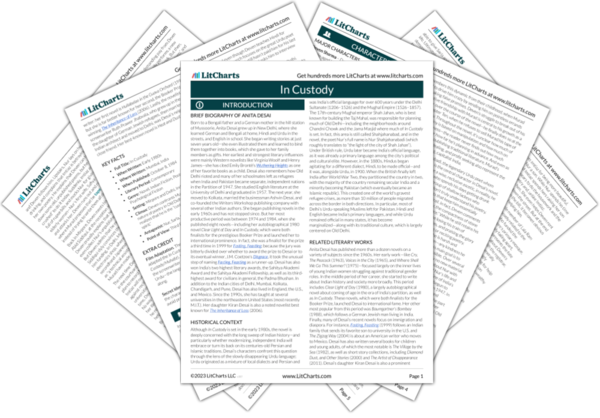Anita Desai has published more than a dozen novels on a variety of subjects since the 1960s. Her early work—like
Cry, The Peacock (1963),
Voices in the City (1965), and Where
Shall We Go This Summer? (1975)—focused largely on the inner lives of young Indian women struggling against traditional gender roles. In the middle period of her career, she started to write about Indian history and society more broadly. This period includes
Clear Light of Day (1980), a largely autobiographical novel about coming of age in the era of India’s partition, as well as
In Custody. These novels, which were both finalists for the Booker Prize, launched Desai to international fame. Her other most popular from this period was
Baumgartner’s Bombay (1988), which follows a German Jewish man living in India. Finally, many of Desai’s recent novels focus on immigration and diaspora. For instance,
Fasting, Feasting (1999) follows an Indian family that sends its favorite son to university in the U.S. and
The Zigzag Way (2004) is about an American writer who moves to Mexico. Desai has also written several books for children and young adults, of which the most notable is
The Village by the Sea (1982), as well as short story collections, including
Diamond Dust, and Other Stories (2000) and
The Artist of Disappearance (2011). Desai’s daughter Kiran Desai is also a prominent writer: her first novel is
Hullabaloo in the Guava Orchard (1998), but she is far better known for her second, the Booker Prize-winning
The Inheritance of Loss (2006). Lastly, the novelist and screenwriter Ruth Prawer Jhabvala, who grew up in the UK as the daughter of German Jewish refugees, then married an Indian architect and moved to Delhi, was Desai’s neighbor and close friend. Her best-known novel is
Heat and Dust (1975).
